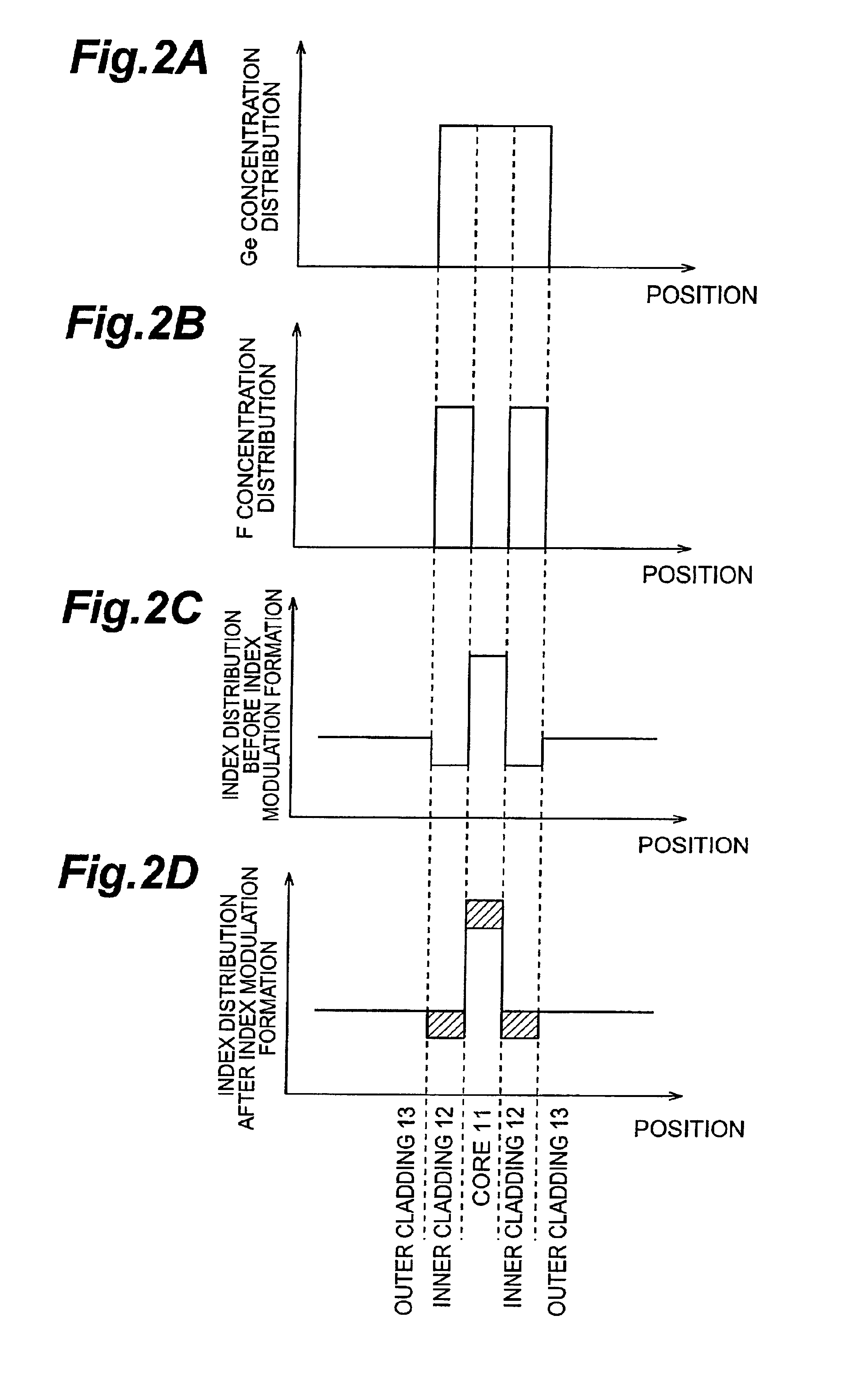Diffraction grating device
a grating device and grating technology, applied in the direction of instruments, optical waveguide light guides, optical light guides, etc., can solve the problems of large radiation mode loss and transmission loss generated by optical coupling, and achieve the effects of shortening longitudinal length, efficient reflection, and increasing index modulation amplitud
- Summary
- Abstract
- Description
- Claims
- Application Information
AI Technical Summary
Benefits of technology
Problems solved by technology
Method used
Image
Examples
Embodiment Construction
The embodiment of the present invention will be described below in detail with reference to the accompanying drawings. The same reference numerals denote the same elements throughout the drawings, and a repetitive description thereof will be omitted. For the descriptive convenience, orthogonal coordinate systems are illustrated in the figures.
FIG. 1A is a sectional view of a diffraction grating device 1 according to this embodiment. FIG. 1B is an enlarged view of part of FIG. 1A. FIG. 1A shows a section of the diffraction grating device 1 taken along a plane including the optical axis of the diffraction grating device 1.
In the diffraction grating device 1, index modulations are formed along the longitudinal direction (X-axis direction) of an optical fiber 10 serving as an optical waveguide. The optical fiber 10 has a core region 11, inner cladding region 12, and outer cladding region 13 sequentially from the optical axis center. Index modulations are formed in both the core region 1...
PUM
 Login to View More
Login to View More Abstract
Description
Claims
Application Information
 Login to View More
Login to View More - R&D
- Intellectual Property
- Life Sciences
- Materials
- Tech Scout
- Unparalleled Data Quality
- Higher Quality Content
- 60% Fewer Hallucinations
Browse by: Latest US Patents, China's latest patents, Technical Efficacy Thesaurus, Application Domain, Technology Topic, Popular Technical Reports.
© 2025 PatSnap. All rights reserved.Legal|Privacy policy|Modern Slavery Act Transparency Statement|Sitemap|About US| Contact US: help@patsnap.com



